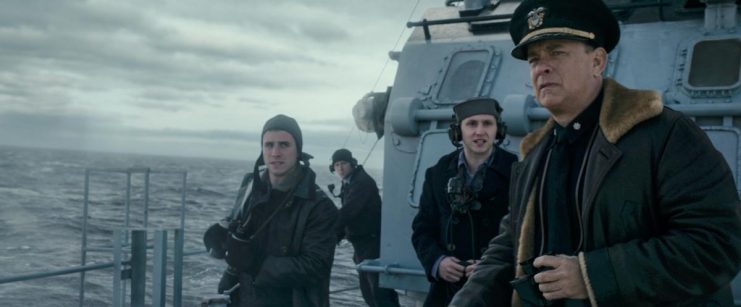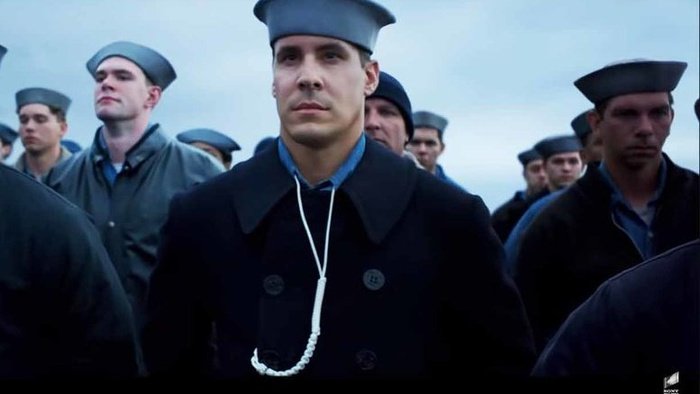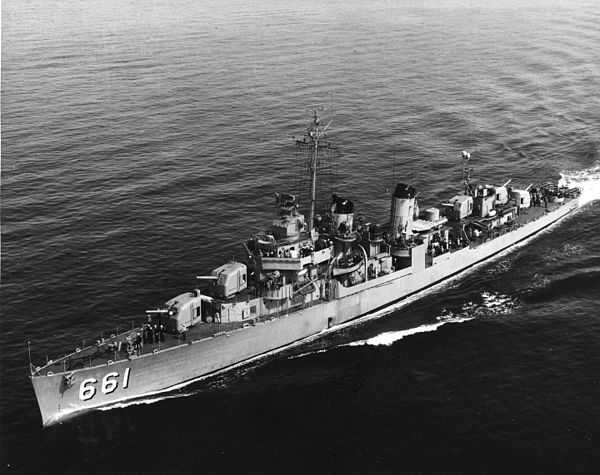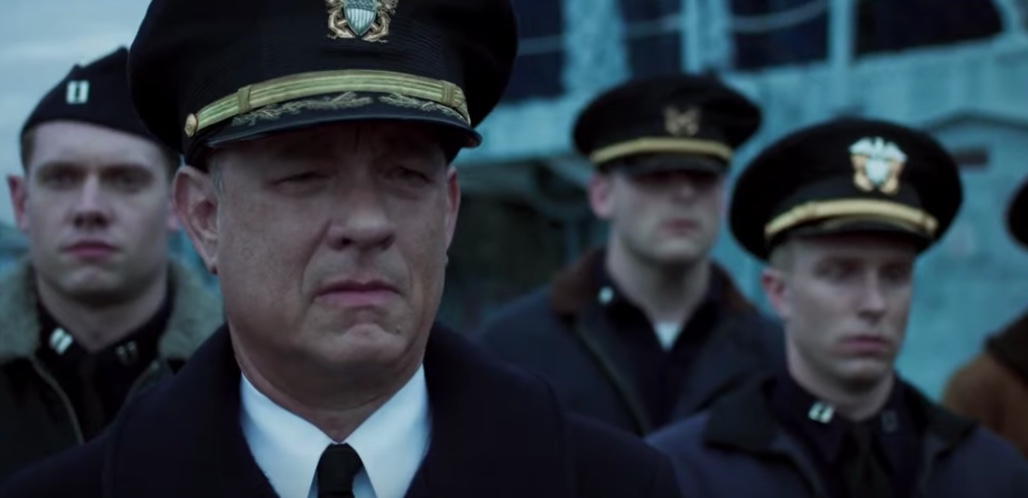Tom Hanks can’t seem to get enough. His new movie ‘Greyhound’ sees one of America’s favourite Kings of Hollywood star as Navy Commander Ernest Krause, escorting more than three dozen Allied ships across the Atlantic while fending off U-Boats.
The movie is based on the CS Forester novel, ‘The Good Shepherd’ and Hanks himself is said to have helped co-write a large part of the script.
The original story tells how Krause takes up the post of Captain in his first wartime mission, which stirs some nervousness in the crew.

As the mission continues Krause’s ship moves out of safe air cover, becoming more vulnerable to the underwater terror of the German U-Boat command.
The USS Keeling, codenamed ‘Greyhound’, spots an enemy ship early on and sets about eliminating it. In the Atlantic it seems it is all about kill or be killed.
As the sonar confirms the destruction of the German submarine, the US Commander and his crew receive a threatening message from a German Commander, ‘good luck surviving the night’.
Then the sonar reveals their ship is being circled by a ‘Wolf-pack’ of U-Boats.
But Hanks rouses his crew as torpedoes come in from all sides, shouting that they will, ‘rain hell down from on high.’

There have been a number of interesting and high-profile War movies to choose from in theatres recently, with Sam Mendes’ ‘1917’ making history in more ways than one earlier in the year.
There was a lot of positive critical reaction to Mendes storytelling and Hanks is likely to receive a similar range of plaudits.
Most of the principal photography for the movie was filmed aboard the USS Kidd

The Battle of the Atlantic was the longest continuous military campaign during World War Two, beginning in 1939 and raging all the way through to the end of the War in Europe in 1945.
The Allied Blockade and the Nazi Counter-Blockade peaked from Mid-1940 to 1943.
The Nazis lost an incredible 783 submarines during the battle, which killed some thirty-thousand German sailors.
The Nazis also lost another forty-seven warships. Their Axis partners from Italy lost just 17 submarines and five-hundred sailors.
The Allies fared little better with 175 warships lost at sea and 3,500 merchant vessels destroyed. More than 70,000 seamen were killed while the RAF lost 741 aircraft flying search and destroy missions.
Britain required in excess of a million tones of imports every week the war went on in order to feed the population and build the war effort.
The role of ships like the one Tom Hanks commands in the film ‘Greyhound’ was not only essential to securing victory in Europe, but it also ensured that Hitler’s war machine was kept well away from American shores.
It was clear to the Fascist Axis partners that to allow the build-up of machinery, arms, ammunition and other supplies in Britain, just a few miles off the coast of Northern Europe, would consolidate the threat of invasion all along the European Atlantic Front.
Hitler demanded that the line be held, and the Allied ambitions be thwarted.
It was not to be. The Allies threw everything they had at destroying the German Blockade, and the price was set very high.
The six years that the battle ran saw over 100 convoy battles and something like a thousand single-ship face-offs across millions of square miles of ocean.
During 1940 the British faced catastrophic losses until new ships from Canada and ex-American assets were drafted in.
The Canadian Navy expanded at an incredible rate to help cope with the escort duties. The Free French, Dutch and Norwegians all operated under British command.
The German ‘Wolf-Packs’ continued to hunt and destroy but were eventually overcome by the sheer number and determination of the Allies.
Tom Hanks has been to War before, ‘Saving Private Ryan’, in Normandy after D-Day.
Have You Heard of The Special Forces Ghost Car That Operated in Bosnia
Let’s hope that his new trip back in time to the danger and drama of the high seas is as rewarding, for Hanks, and for the audience.
